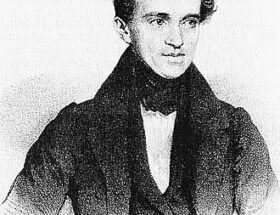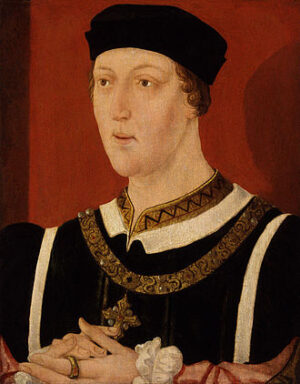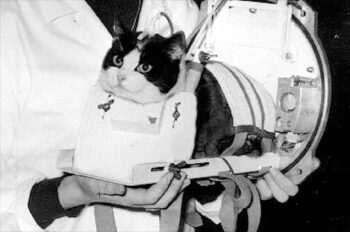Early life

Lady Anne Clifford was born on 30 January 1590 in Skipton Castle and was baptised on 22 February in Holy Trinity Church. Anne was the only surviving child and sole heiress of George Clifford, 3rd Earl of Cumberland by his wife, Lady Margaret Russell, daughter of Francis Russell, 2nd Earl of Bedford.
Her parents’ marriage was soured by the deaths of Anne‘s two elder brothers before the ages of 5 and her parents lived apart for most of her childhood. The strain of the marriage was seen in the public realm as well, especially after the separation.
Her father maintained an important position at the court of Elizabeth I, while her mother received no recognition in regard to her husband at court. As her parents were separated, her mother maintained a matriarchal position in her house, for the family was kept under her care.
Anne was brought up in an almost entirely female household and received an excellent education from her tutor, Samuel Daniel the poet. As a child, she was a favourite of Queen Elizabeth I.
She danced in masques with Queen Anne of Denmark, consort of King James I, and played the Nymph of the Air in Samuel Daniel‘s masque Tethys’s Festival, as well as roles in several of the early court masques by Ben Jonson, including The Masque of Beauty (1608) and The Masque of Queens (1609). In April 1613 she joined Anne of Denmark’s progress to Bath.
On the death of her father on 30 October 1605, Anne succeeded suo jure to the ancient title Baroness de Clifford, a barony created by writ in 1299, but her father’s earldom passed (according to the patent of its creation) as was usual, to the heir male, namely his younger brother Francis Clifford, 4th Earl of Cumberland, to whom he had willed his estates.
He had bequeathed to Anne the sum of £15,000. In her young adulthood, she engaged in a long and complex legal battle to obtain the family estates, which had been granted by King Edward II under absolute cognatic primogeniture, instead of the £15,000 willed to her.
Her main argument was that she was just 15 years old at the time. In January 1617, Anne of Denmark, encouraged Anne to pursue her claim and not accept a settlement promoted by James VI and I.
Married life
Anne married Richard Sackville, 3rd Earl of Dorset on 27 February 1609. Sackville‘s grandfather had arranged the marriage, writing in April 1607 to ask the courtier George More of Loseley to influence the Countess of Cumberland for the match with “that virtuous young lady the Lady Anne”.
The old Earl of Dorset had to counter rumours against his family honour that he trumped negotiations for her hand from the heir to the Earl of Exeter. By her first husband Anne had five children, three sons who all died before adulthood and two daughters and co-heiresses, Lady Margaret Sackville (b.1614) and Lady Isabella Sackville (b.1622).
In 1630, six years after the death of her first husband, Anne married Philip Herbert, 4th Earl of Pembroke and 1st Earl of Montgomery, whose first wife, Lady Susan de Vere had died the year before.
Both marriages were reportedly difficult with contemporaries citing Anne‘s unyielding personality as a cause, whilst her cousin Edward Russell, 3rd Earl of Bedford, compared her to the River Rhone.
A more sympathetic view might blame some of the troubles in her first marriage on her husband’s extravagance and his infidelities. Her first husband was a prominent figure at court. Her disagreement with her husband over her inheritance claims proved another source of difficulty within their marriage.
Lord Dorset believed she should settle the inheritance case rather than pursue it through the courts. In disagreeing with and defying her husband’s wishes, Anne was breaking with the norm of obedience to her husband. A central conflict with her second husband lay in her decision to allow her younger daughter to make her own choice of husband.
Patron of the arts
Anne was an important patron of literature and due to her own writings in the form of letters and the diary she kept from 1603 to 1616, was a literary figure in her own right. John Donne said of her that she could “discourse of all things from Predestination to Slea-silk”.
Anne attended the royal court in November 1617, wearing a “green damask gown embroidered, without a farthingale”. She gave Anne of Denmark an expensive satin skirt with £100 worth of embroidery. She last saw King James in January 1620 at Whitehall Palace after a masque in the Banqueting House. The show was Ben Jonson‘s News from the New World Discovered in the Moon.
Jan van Belcamp painted a huge triptych portrait of Anne to her own design and specifications. Titled The Great Picture, it portrays Anne at three points in her life: at age 56 (right), at age 15 (left), and before birth in her mother’s womb (centre).
In connection with the painting, Anne dated her own conception at 1 May 1589, an unusual act of precision. The painting can now be seen in the Abbot Hall Art Gallery in Kendal, Cumbria.
Anne sent a miniature portrait of herself to her mother the Countess of Cumberland in June 1615, writing, “I have sent you my picture done in little, which some says is very like me, and others say it does me rather wrong than flatters me, I know you will accept the shadow of her whose substance is come from yourself. I hope you will requite me with the same kindness and let me have yours when either you come up to London, or when so ever any that draw pictures comes into those parts where now you are.”
Building projects
In 1656 Anne erected the Countess Pillar near Brougham, Cumbria, in memory of her late mother. This was the site of her last meeting with her mother in 1616. On the low stone beside it, money was given to the poor on the anniversary of their parting. This is commemorated annually on 2 April.
She restored churches at Appleby-in-Westmorland, Ninekirks, Brougham and Mallerstang. Anne was also responsible for the improvement and expansion of many of the Clifford family’s castles across Northern England, including Skipton Castle in Yorkshire and Pendragon Castle, Brough Castle, Appleby Castle and Brougham Castle, all in Westmorland (now Cumbria).
Later life & death
After inheriting her father’s estates in Westmorland, by outliving the male heirs (her uncle and cousin), Anne became a wealthy landowner. She was heavily involved with her tenants to the point of filing lawsuits against them and actively pursuing rents and debts owed to her.
This was to be the demeanour of her power in later life, that of a direct landowner calling upon the traditions of the baronial class. After moving north, she rotated her residence amongst her castles, living in various ones for several months to a year at a time.
Anne died aged 86 at Brougham Castle on 22 March 1676, in the room in which her father had been born and her mother had died. At her death she was the Dowager Countess of Dorset, Pembroke, and Montgomery. Her tomb and monument is in St Lawrence’s Church, Appleby-in-Westmorland.


